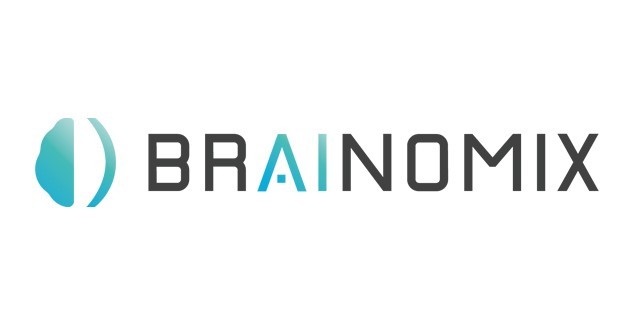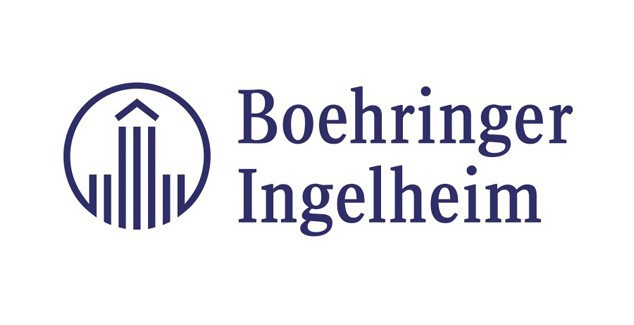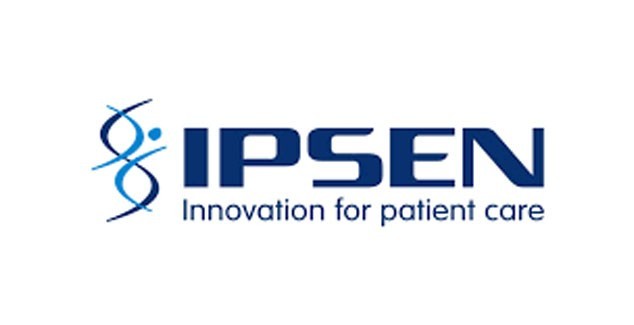Stroke Care in China
Statement by the Chinese Stroke Association and endorsed by WSO
China has the biggest stroke burden in the world. However, little is known about the current prevalence, incidence, and mortality of stroke at the national level, and their trends over the past 30 years.
In 1990, stroke was listed as the second cause of death in China. By 2010, stroke had become the leading cause of death in 27 of 33 provinces in China, responsible for a total of ≈1.9 million deaths. . Stroke has the highest single-disease disability rate and is a financial and social burden in China. From 1993 to 2003, the average growth rate for the direct cost of stroke care was 18.04% per year. In 2010, the average cost per capita of patients with a high risk of stroke was estimated to be US $517.8 per year. This estimation covered the direct medical costs of US $435.4 (50.1%), direct nonmedical costs of US $18.1, and indirect costs of US $64.3 resulting from a loss of productivity. This heavy financial burden to the Chinese healthcare system will likely increase in the next 20 years because of the aging population. The rapid sociodemographic changes and healthcare transformation in China have had an impact on the prevalence of common stroke risk factors over the past 20 years. Although hypertension remains the most important risk factor for all types of stroke, smoking, obesity, and diabetes mellitus have become more prevalent and continue to influence the stroke burden in China. In 2013, a nationally representative door-to-door survey was conducted in 155 urban and rural centers in 31 provinces in China, involving a total of 480 687 adults aged ≥20 years. All stroke survivors were considered as prevalent stroke cases at the prevalent time (August 31, 2013). First-ever strokes that occurred during the year preceding the survey point-prevalent time were considered as incident cases. According to computed tomography/MRI/autopsy findings, strokes were categorized into ischemic stroke, intracerebral hemorrhage, subarachnoid hemorrhage, and stroke of undetermined type.
Of the 480 687 participants, 7672 were diagnosed with a prevalent stroke (1596.0/100 000 people) and 1643 with incident strokes (345.1/100 000 person-years). The age-standardized prevalence, incidence, and mortality rates were 1114.8/100 000 people, 246.8 and 114.8/100 000 person-years, respectively. The type of stroke was documented by computed tomography/MRI brain scanning in 90% of prevalent and 83% of incident stroke cases. Among incident and prevalent strokes, ischemic stroke constituted 69.6% and 77.8%, intracerebral hemorrhage 23.8% and 15.8%, subarachnoid hemorrhage 4.4% and 4.4%, and undetermined type 2.1% and 2.0%, respectively. Age-specific stroke prevalence in men aged ≥40 years was significantly greater than the prevalence in women (P<0.001). The most prevalent risk factors among stroke survivors were hypertension (88%), smoking (48%), and alcohol use (44%). Stroke prevalence estimates in 2013 were statistically greater than those reported in China 3 decades ago, especially among rural residents (P=0.017). The highest annual incidence and mortality of stroke was in the Northeast (365 and 159/100 000 person-years), then Central areas (326 and 154/100 000 person-years), and the lowest incidence was in Southwest China (154/100 000 person-years), and the lowest mortality was in South China (65/100 000 person-years) (P<0.002). The stroke burden in China has increased over the past 30 years, and remains particularly high in rural areas. There is a north-to-south gradient in stroke in China, with the greatest stroke burden observed in the northern and central regions.
However, China has made substantial progress in stroke education, research, and stroke care recently . Consequentially, China is now capable of conducting high quality clinical trials and has certified many levels of stroke centers throughout the country, and for the first time, there is now a trend towards a decreased mortality rate from stroke. In the last decade, China has conducted many studies on stroke epidemiology, pathogenesis, treatment, and quality care. For the past decade, the Chinese Center for Disease Control and Prevention has made great effort to improve stroke care quality and declared it a national priority. The Chinese Stroke Association (CSA) came into being in January 2015, which initiated a medical quality improvement project-China Stroke Center Alliance (CSCA). CSCA has certified over 300 Comprehensive Stroke Centers within 31 provinces.
Under the leadership of the CSA, a Red Bracelet Volunteers Service Corps (RBV) that enhances public awareness of stroke and highlights the need for greater prevention throughout China. RBV is an award-winning program recognized by the World Stroke Organization, that has provided community stroke education to nearly 3 million members of the population in China. About 800 tertiary hospital in China have participated in the stroke risk screening and education in their community as part of the Red Bracelet Program. At the same time, County Hospital Training Camp program of CSCA has trained stroke experts from over 1000 county hospitals which have mostly joined RBV.
Telestroke is a relatively new process in China. The National Telestroke Center was established in 2014. It was designed to provide neurological coverage to 300 rural hospitals nationwide through the telestroke network platform. It utilizes a hub and spoke model, providing stroke diagnosis and treatment advice to underserved areas in China.
One unique national program that gained momentum in China was the development of citywide stroke/thrombolytic maps. This project was supported by local governments and was developed under the guidance of the National Health Ministry, with unified standards, and 1 platform. Realizing that many centers now can offer thrombolytic therapy, cities are developing maps that label the location of hospitals that can provide thrombolytic treatment. In addition, the emergency service triage center will have the authority to direct the ambulance to the nearest stroke center 24/7. Currently, there are over 30 cities with such maps in place. Data on its usage and outcome are being collected.
In 2017, National Ministry of Science and Technology issued the 13th 5-Year Plan for the National Economic and Social Development of PRC, which indicated that one of the primary missions is the implementation of comprehensive prevention and control of chronic diseases. This prompted many studies on stroke management, including the study on the critical technology and the process for improvement of reperfusion in patients with AIS, A Sino-US collaborative network for blood pressure management strategies, early standardized treatment of ruptured intracranial aneurysm and risk assessment of unruptured aneurysm, etc was established. From a standardized template and records, electronic data extraction and application, and professional imaging analysis to individual follow-up evaluation, all current clinical studies in China are now up to international standards. On the basis of several large databases, big data analysis can be done now to accomplish multi-omics research, establish a biobank for neurological research, and facilitate individualized and precise treatment in the near future. China has been making substantial progress in applying artificial intelligence in medical practice and in stroke outcome analysis. Zhang Qing et al proposed a model for predicting 3-month treatment outcome by analyzing physiological parameters during the first 48 hours after stroke using logistic regression in 2013. To predict the outcome of stroke treatment, Chen Yasheng et al analyzed computed tomographic scan data via machine learning for evaluating cerebral edema after hemispheric infarction in 2016. For the first time in stroke and neurology practice, AI will compete with neurologists and radiologists in reading magnetic resonance imaging films in Beijing. In 2018, the National Clinical Improvement System concluded that there has been substantial improvement made in stroke care quality in the past 5 years. However, much work still needs to be done in areas such as reducing the time from emergency room admission to receiving thrombolytic therapy, appropriate use of anticoagulation therapy for stroke patients with atrial fibrillation, as well as timely initiation and proper assessment of stroke rehabilitation. The next step is to introduce a stroke care performance improvement navigation plan, which will facilitate the process of standardizing care process so that high-quality stroke care can be uniformly achieved.
In conclusion, despite the trend of decreasing stroke mortality in China, stroke incidence is still rising. In the past decade, China has made significant progress in stroke education, stroke care, and research. The next phase of the stroke program will be to invest more financial and human resources so that standardized, quality stroke care can be provided throughout the country and the goals set forth by the national 13th 5-year plan can be achieved.
- Calling All Future Stroke Leaders
- Words from the President on stroke care during the COVID19 pandemic
- World Stroke Academy content is NOW available free online to all
- Global Stroke Leaders Launch Radical Prevention Strategy
- The Global Impact of COVID-19 on Stroke - the latest results from the survey from Prof. Marc Fischer, WSO President-Elect
- Reduced rates for your attendance at ESO-WSO 2020
- Get ready to Join the MoveMent!
- Global Stroke Leaders Launch Radical Prevention Strategy
- World Stroke Day 2020 News Release
- No Time for Silence on Stroke Prevention
- WSO Brain and Heart Week
- The latest World Stroke Academy news
- Accuracy in BP Measurement and Effective Hypertension Control Promoted on World Hypertension Day
- The 74th World Health Assembly - 24-31 May
- The state of stroke services across the globe: report of World Stroke Organization
- WHO releases priority list of medical devices and interventions for stroke
- World Stroke Day Campaign website and toolkit LIVE
- WSO welcomes WHO recommendations on management of hypertension
- The World Stroke Academy newly branded website is live!
- 5 ways you can support the #Precioustime campaign on World Stroke Day
- GCCH Position Paper “Preventing the next pandemic: The case for investing in circulatory health”
- Global survey reveals only 35% hospitals worldwide provide life-saving stroke treatment
- How to save $1 trillion
- WSO Global Stroke Fact Sheet 2022
- World Stroke Campaign Award Shortlist Announced
- ICD-11 is now officially in effect
- World Stroke Organization’s statement on Ukraine
- WSO Annual Report for 2021
- Get Ready for World Stroke Day 2022 - The Power of Saving #Precioustime
- WHO Strategic Technical Advisory Group meeting on Global Noncommunicable diseases action plan 2013-2030
- WSO Calls for changes in primary prevention guidelines for cardiovascular disease and stroke
- WSO Future Stroke Leaders Programme - Cohort 2 Announcement
- Building Momentum around Implementation of Quality Stroke Care – update from the WSO Rede Brasil AVC Global Stroke Alliance Meeting, Sao Paulo
- World Stroke Day 2022 Raising public awareness of stroke signs and the importance of #Precioustime
- Countdown to World Stroke Day- key actions for members and partners!
- WSO is announcing the results from the Officers elections 2022
- World Stroke Organization Tackle Gaps in Access to Quality Stroke Care
- WSC 2022: One Voice for Stroke
- World Stroke Day #Precioustime Campaign Evaluation
- In memoriam of Dr. Ralph L. Sacco
- WHO Executive Board (EB 152)
- RES-Q + Using digitization and artificial intelligence to improve healthcare
- Be the storyteller of 2023. Submit your abstract at WSC 2023!
- Summary of systematic review and synthesis of global stroke guidelines on behalf of WSO
- World Health Assembly (WHA76)
- World Stroke Day 2023 - Together we are #GreaterThan Stroke
- THE ROAD TO UHC: WHY INTEGRATION OF CIRCULATORY HEALTH INTERVENTIONS IN PRIMARY CARE IS ESSENTIAL
- Global Declaration on Stroke
- NEW World Stroke Campaign Website goes LIVE!
- Global Declaration on Stroke Commitment Launch: New Delhi, India – September 8th, 2023
- TOGETHER WE CAN BE #GreaterThan STROKE!
- The Global Stroke Community Reunited for the WSC 2023
- Join the Future Stroke Leaders Success Journey – Cohort 3 Applications Open
- The RES-Q platform has officially launched!
- New Trial Expands Window For Stroke Thrombectomy With Simpler Imaging
- Now available: WSA Big Data & Stoke e-Learning module
- World Stroke Day 2024
- World Stroke Campaign Award 2023 Winners
- United in Action to Transform Stroke Care
- WSC 2024 Early Bird Registration Deadline Approaching!
- WSO and SingHealth Sign MoU to Enhance Regional Stroke Management and Care in Collaboration with Angels Initiative
- Stroke Action Now - join the WSO global advocacy coalition
- Time for a Revolution in Stroke Care - Acute Care Policy Brief Launch
- Prioritizing access to quality acute stroke care - the time to act is now!
- World Stroke Organization Launches Global Coalition to Drive Action on Stroke Care
- Highlights from the Global Stroke Alliance meeting in Bogota, Colombia – 20-22 November 2024
- United in Action for #StrokeActionNow - Update from the Global Stroke Action Coalition
- The Global Stroke Action Coalition issues an urgent call to action
- Homepage
- Vision and strategy
- Board and Executive Committee
- Privacy policy
- Terms of use
- SEO sitemap
- Global Stroke Corner
- Words from the President: LOOKING AHEAD
- WSO Publishes Global Stroke Fact Sheet
- WSO Call for Editor-in-Chief of IJS
- WSO Membership - Call for Dues 2019
- ESO-WSO Conference 2020
- XXII Ibero-American Stroke Organization Congress
- Asia Pacific Stroke Conference 2019
- European Master in Stroke Medicine - Feedback from WSO scholarships recipients
- Philippine Nationwide Stroke Training, 2018
- Advances in neuroscience & new strategies for preventing & treating brain diseases, November 2018, Moscow
- International conference on essentials of stroke care, November 2018, India
- Education Committee Update
- SSO Committee March 2019
- Stroke Guidelines & Quality Committee Update
- WSO Research Committee Update
- WSO and Global Policy – Key Events in 2019
- Report of WHO Global Forum on Medical Devices
- Report from the WHO’s Executive Board in Geneva January 24th to February 1st, 2019
- WSO President and Romanian Health Minister sign a Memorandum of Understanding
- First Stroke Summer School in Latin America
- Stroke Thrombolysis Master Class-2018: A Report
- Welcome to New Members
- Heart and Stroke Foundation of Canada Publishes a New Report
- On the International Women’s Day, March 8, WSO celebrated women in stroke!
- News from the European Stroke Organization
Our partners and sponsors
 Corporate Supporters
Corporate Supporters
 Corporate Supporters
Corporate Supporters
 Platinum Plus
Platinum Plus
 Platinum Plus
Platinum Plus
 Bronze
Bronze
 Silver
Silver
 Gold
Gold
 Silver
Silver
 Silver
Silver
 Bronze
Bronze
 Bronze
Bronze
 Bronze
Bronze
 Bronze
Bronze
 Silver
Silver

 Member login
Member login